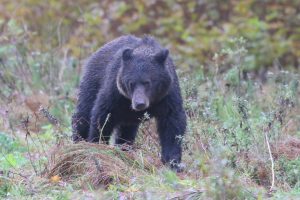 I’d never seen a bear in the wild before, then all in one summer I saw three different types: Polar Bears, Grizzly Bears and Black Bears. Mind you, being in the right country did help.
I’d never seen a bear in the wild before, then all in one summer I saw three different types: Polar Bears, Grizzly Bears and Black Bears. Mind you, being in the right country did help.
I’ve written about my amazing trip, last June, to the Arctic seeing polar bears (and walruses) . In September I went with three friends to the Great Bear Rainforest, off the West coast of British Columbia, to see Grizzly, Black and hopefully Spirit (or Kermode) bears. This was another amazing trip and very different in its own way.
We spent a week exploring the Great Bear Rainforest by boat. We went from Kitimat to Bella Bella, passing along the Douglas Channel, via various inlets and islands, fjords and forest paths. We visited Gribbell Island, Princess Royal Island and the wondrous Mussel Estuary. This area is only accessible by sea, so it’s quite untouched.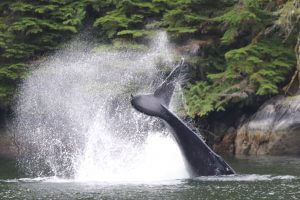
The Arctic experience was extreme and very exciting. I was in the world of the polar bear (and walrus) and it felt far, far away. Previous trips to see Orang Utans in Borneo, the Big 5 in Africa and the Lemurs of Madagascar similarly seemed far away. I have come to associate iconic wildlife with distant and strange places.
In contrast, I expected Canada to be like home, but with bears in the back garden. Distant perhaps, but not so strange. After all, Canadians are our cousins, we have a shared history (well partly) and a common language. It’s the Northern hemisphere, the ‘developed world’, all very familiar. Plus, I have been to the US many times and Toronto for two whole days.
But it was different, often in ways I didn’t expect. I knew Canada was big, but the sheer expanse of it is daunting when you are used to the overcrowding of greater London. As we flew across to the west coast we saw some truly stunning scenery. It was equally exhilarating at ground level. Despite the rain. The fact that Canada contains the world’s largest temperate rainforest had somehow passed me by.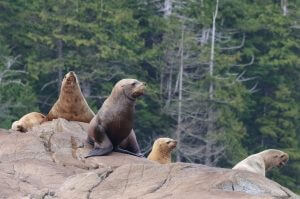
Compared to the Arctic ice, the grass and trees – albeit expansive and wet – felt familiar. And I’d seen lots of footage of the bears. Yet it still felt strange. Then I realised: it is I who was the stranger in their land. Just as I had felt among the polar bears, we humans are the alien imposters.
We saw many Grizzly and Black bears but sadly no Spirit bears. We were lucky enough to see the bears at close range, so LOTS of photos. We also had the pleasure of seeing humpback whales bubble-netting, sea lions basking and bald eagles perched on tree tops, enjoying the ultimate birds’ eye view. Lots more photos.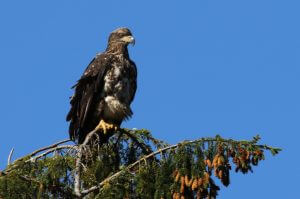
Not everything was captured on camera though. Some Dall’s Porpoises entertained us dipping and diving beside the boat at high speed – a bit too fast to compose the perfect shot. One evening we could just make out two grey wolves on the shore; a little too distant and dark to film but a great one for the memory. Then there was the sea otter which I did capture, but then deleted as I was reliably informed it was a log! But I did see it again later and have learned not to delete such shots quite so quickly.
Conservation and other concerns
A common feature of wildlife adventures is learning the bad news: what we humans are doing to the planet. Bear populations have massively declined due to hunting, urbanisation, logging, pollution, climate change and more.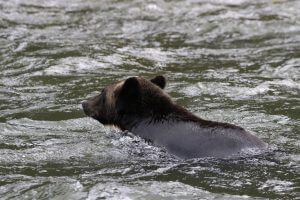
So, some good news: The Great Bear Rainforest has become a vital preserve. The area has enjoyed increasing levels of protection and conservation in recent years, culminating in 2016 when the BC Government agreed to permanently protect 85% of it from industrial logging. Many groups are trying to protect this area and its wild inhabitants, with some success.
The First Nations people are key players in this conservation effort. Their role was another revelation. We enjoyed a day watching bears in the company of a First Nations guide, learning all about their love of nature. The First Nations people have historic rights to clean water, fishing and hunting and they are rigorously invoking these to stop mining, fracking and other forms of extraction.
A major controversy surrounds the proposed Northern Gateway pipeline. It would stretch from the oil sands of Edmonton to Kitimat where the oil would be transferred to tankers for onward transport. Opponents fear that a spill in this remote area could cause untold damage to the complex eco-system. Although oil tankers are a common sight in the surrounding seas, this project is on a totally different scale.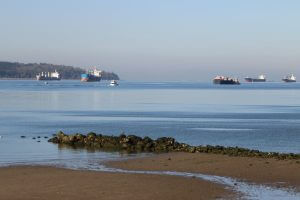
In her excellent book, ‘This Changes Everything’, Naomi Klein describes in some detail how indigenous people are fighting such proposals. Those now siding with First Nations people are non-native Canadians who once objected so strongly to these ‘native rights’ that they sparked race riots . The activists no longer see the ‘Indians’ as aliens but allies, ‘partners in the struggle against climate chaos’.
Honour the Treaties protests, and other alliances are gaining public support. But mining brings cash and employment, so the legal and political battle between the extractive industries and indigenous peoples is set to continue. Donald Trump’s high profile support for US pipelines has further fuelled the frenzy.
Back to the City
Our final stops were Vancouver, and Victoria on Vancouver Island. These are two fantastic cities, well worth the visit. In both places I was struck by how friendly the people are. On 5 different occasions, when locals saw me looking at a map, they asked if they could help direct me. This does not happen in London! Maybe having lots of living-space helps.
The BC Museum in Victoria had an excellent exhibition, ‘Our Living Languages’ on the central role of language in human cultures. It described how First Nations children had been forced into Residential Schools, and how restricting use of traditional languages and other acts by the colonialists had sought to destroy the First Nations’ culture. The impact of such policies remains today. There is a very high suicide rate among First Nations people, many still feel marginalised – aliens in their own land. Again, this history had passed me by.
Also on show 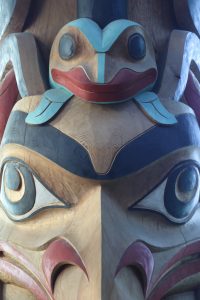 at the Museum and around both cities, are restored totem poles, crafted by the First Nations People. These displays mark a further effort to reinforce a sense of respect for the people, their culture and beliefs. The totem poles represent the First Nations’ spiritual connection with nature. They are packed with symbolism showing different depictions of animals. The bears are a sign of strength, eagles of insight, frogs of connection and the wolf of leadership. Beavers, ravens, whales and others commonly feature too. Animals are an important part of the First Nations’ oral story telling tradition and this is reflected in children’s stories today. I certainly plan to learn more about the First Nations people, their history and their abiding relationship with animals.
at the Museum and around both cities, are restored totem poles, crafted by the First Nations People. These displays mark a further effort to reinforce a sense of respect for the people, their culture and beliefs. The totem poles represent the First Nations’ spiritual connection with nature. They are packed with symbolism showing different depictions of animals. The bears are a sign of strength, eagles of insight, frogs of connection and the wolf of leadership. Beavers, ravens, whales and others commonly feature too. Animals are an important part of the First Nations’ oral story telling tradition and this is reflected in children’s stories today. I certainly plan to learn more about the First Nations people, their history and their abiding relationship with animals.
Another feature of both cities were the lavish yachts and luxury waterside apartments. Such residences are popular with the world’s wealthy, and Vancouver and Victoria are no exception. It was interesting to hear from the locals that they increasingly cannot afford to live in the city. Much of the property has been bought by ‘foreigners’ and lies empty while the prices continue to rise.
As with all trips, some things were familiar, some seemed strange and there was much to learn. That’s the joy of travel and British Columbia is a fantastic destination.
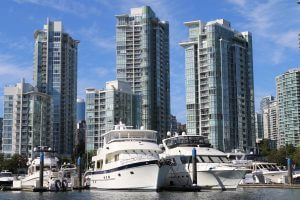
© Allison Hill, 2017 (including photos)
